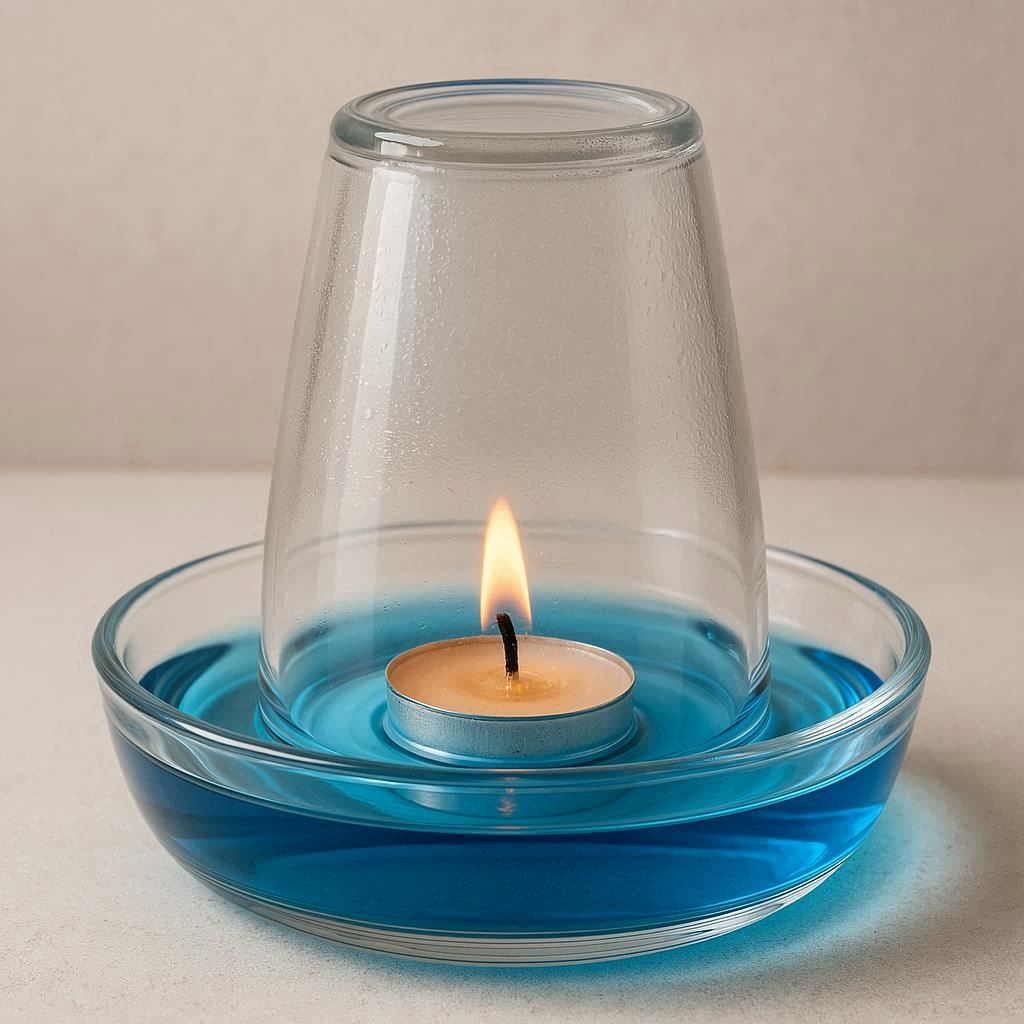Have you ever witnessed the fascinating sight of a candle floating in a bowl of water while burning continuously? This simple yet intriguing experiment, often referred to as the floating candle trick, is a popular demonstration in science classrooms and at home. It not only amazes viewers but also serves as an excellent tool for teaching fundamental concepts of chemistry and physics, particularly the role of oxygen in combustion. In this blog post, we’ll delve into the science behind this trick, explore its educational value, and discuss how it can be used to spark curiosity and learning.
The Science Behind the Floating Candle Trick
The floating candle trick relies on a few basic materials;
- A candle
- A bowl of water
- A light source (to ignite the candle)
Here’s how the experiment typically unfolds:
- Light the candle and place it near the edge of the bowl containing water.
- Observe how the candle burns normally at first.
- Once the candle is placed on the surface of the water, it begins to float, and interestingly, the flame continues to burn despite being in proximity to water, which is known to extinguish fire.
- The candle floats for a short period before the flame eventually goes out, and the candle sinks.
So, what makes this happen? To understand the floating candle trick, we need to explore the principles of combustion and buoyancy.
Combustion: The Essential Role of Oxygen
Combustion is a chemical reaction that occurs between a substance and oxygen, typically producing heat and light. In the case of a burning candle, wax (usually paraffin) reacts with oxygen from the air to produce carbon dioxide and water vapor. This reaction releases energy in the form of heat and light, which we see as a flame.
For combustion to occur, three elements must be present: fuel (the candle wax), oxygen (from the air), and heat (provided by the lighter or match). This is known as the fire triangle. If any of these elements are missing, the fire will not start or will be extinguished.
Buoyancy: Why Does the Candle Float?
Buoyancy is the upward force exerted by a fluid (such as water) on an object submerged in it. According to Archimedes’ principle, the buoyant force is equal to the weight of the fluid displaced by the object. If the weight of the object is less than the weight of the displaced fluid, the object will float.
In the case of the floating candle trick, the candle is less dense than water, which means it displaces less water than its own weight. As a result, the buoyant force exceeds the weight of the candle, causing it to float. The candle continues to burn because the flame is sustained by the remaining oxygen in the air above the water’s surface. However, once this oxygen is depleted, the flame dies, and the candle sinks as it cools and becomes denser.
Educational Value of the Floating Candle Trick
The floating candle trick is more than just a magic trick; it offers a hands-on way to teach important scientific concepts to students of all ages. Here are some of the key learning outcomes associated with this experiment:
- Understanding Combustion: The experiment provides a visual demonstration of combustion, allowing students to observe the process firsthand. It helps them understand the necessity of oxygen in sustaining a flame and how the absence of oxygen leads to the flame’s extinction.
- Exploring Buoyancy: By observing the candle’s behavior in water, students can learn about buoyancy and density. This can lead to further discussions about why certain objects float or sink and how different materials interact with water.
- Encouraging Critical Thinking: The floating candle trick prompts questions and curiosity. Students might wonder why the candle floats, how long it will burn, and what happens if the conditions are changed. This encourages critical thinking and scientific inquiry.
- Practicing Scientific Methodology: The experiment can be adapted into a more structured scientific investigation. Students can hypothesize about variables that might affect the outcome, such as the size of the candle, the depth of the water, or the temperature of the environment. They can then design experiments to test these hypotheses and analyze the results.
Variations of the Floating Candle Trick
The basic floating candle experiment can be modified to explore additional scientific concepts or to make it more engaging for different audiences. Here are a few ideas:
1. The Inverted Candle Experiment
In this variation, the candle is placed upside down in a glass or clear container filled with a small amount of water. When lit, the flame burns from the bottom of the candle, creating a peculiar sight. This setup can be used to demonstrate the role of convection in heat transfer, as the heat from the flame causes the air to expand and rise, creating a circulating current.
2. The Burning Paper Circle
This variation involves placing a paper circle on top of the water and lighting it from the center. The paper burns outward in a circle, creating a ring of fire that appears to float. This can be used to demonstrate the spread of heat and the combustion process in a confined space.
3. The Candle in a Glass Jar
Placing a lit candle in a glass jar and sealing it can provide a dramatic demonstration of the limits of combustion. As the oxygen inside the jar is consumed, the flame gradually diminishes and eventually extinguishes. This can be used to discuss the importance of oxygen in sustaining life and fire.
Safety Considerations
While the floating candle trick is relatively safe when performed under proper supervision, it’s essential to take precautions to avoid accidents. Here are some safety guidelines to keep in mind:
- Supervision: Always conduct the experiment under adult supervision, especially when working with open flames.
- Fire Safety: Keep a fire extinguisher or a bowl of water nearby in case the flame gets out of control.
- Protective Gear: Wear protective eyewear and ensure long hair is tied back to avoid any accidental contact with the flame.
- Ventilation: Perform the experiment in a well-ventilated area to avoid inhaling smoke or fumes.
Conclusion
The floating candle trick is a simple yet captivating experiment that offers a wealth of learning opportunities. By observing a candle burning on the surface of water, we can gain insights into the fundamental principles of combustion, buoyancy, and the behavior of matter. Whether you’re a student, teacher, or simply someone with a curiosity about the world around you, this experiment is sure to inspire wonder and encourage further exploration into the fascinating world of science.
As we continue to learn about the role of oxygen in combustion and the forces that govern the physical world, experiments like the floating candle trick remind us of the beauty and complexity of science—and perhaps, most importantly, they remind us that even in the simplest phenomena, there is always more to discover.



